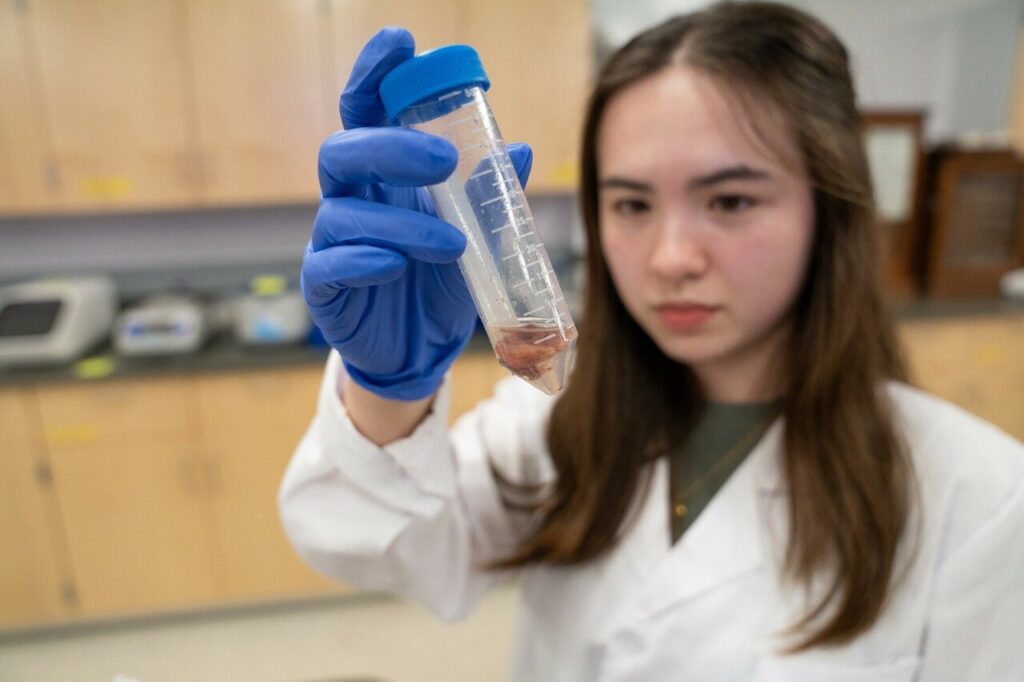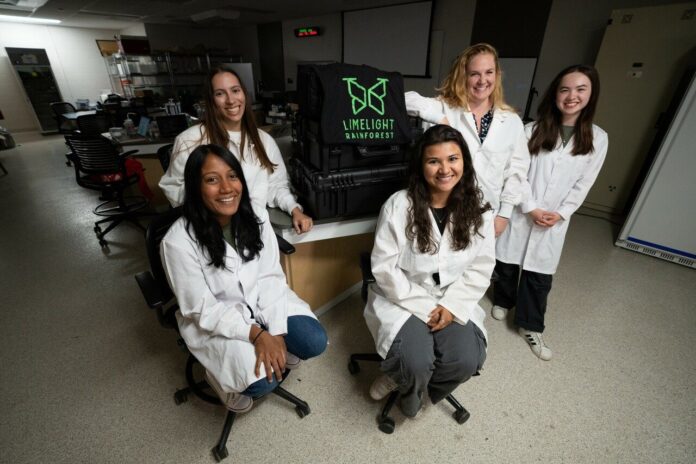A $10 million prize. Seventy-two hours. Six teams. One square kilometer of rainforest. No touchy.
“There can be no human interaction with the forest at all,” said Julie Allen, assistant biological sciences professor at Virginia Tech who is a member of one of six international research teams that advanced to the final round of the XPRIZE Rainforest competition. “That’s the No. 1 rule of the competition.”
On July 8, Allen and her team will be ferried up the Rio Negro into the middle of Brazil’s Amazon rainforest. They will have 24 hours — from noon to noon — to autonomously survey the biodiversity of a square kilometer of rainforest and another 48 hours to analyze and interpret what they found.
Allen’s team will be out by noon July 11, weather depending.
To win, a team must develop the fastest, most efficient automated technologies for identifying species at every level of the rainforest, from canopy to floor.
Among other technologies, Allen’s team is using a device called the Limelight, which is a versatile trap to collect images, acoustics, and DNA data from the forest. A squad of drones will deliver the Limelights across the rainforest canopy to survey biodiversity. Machine learning technology and field DNA sequencing, along with other streams of data, will help the researchers identify species.
“Collecting this amount of data in a 24-hour period is unprecedented,” said Allen, faculty member in the College of Science who leads the team’s DNA and bioinformatics group with postdoctoral associate Niyomi House. “A biodiversity inventory that includes insects, birds, bats, frogs, fish, trees, and mammals in this window of time is likely to set a world record.”

Allen shared some of her expectations and perspectives prior to the event.
How are you feeling?
Really, really excited. And a little nervous. It’s completely nuts.
What are you most excited about?
I’m excited to see what we’re going to get. How many different species are we going to see? I don’t think that anyone has ever deployed this many different lines of survey data in the forest at the same time. Most people studying in the Amazon have a specific question about a specific species, and this survey is on a completely different scale.
I’m also excited to see what possibilities open with the new technology. The competition has allowed us to bring multiple lines of research together in a comprehensive way.
Hopefully this will demonstrate how to do rapid biodiversity surveys because the reality is, we must do it faster. We needed this kick in the butt. The world is changing, we must do it now, and we must do it fast.
Why is this important?
Species are disappearing before we can even study them. If we don’t have a fast way to survey forests, the species won’t be there for us to learn about. This tension underlies everything I do.
In this competition, we will be combining foundational science with emerging technologies to better understand the value of rainforests as they stand.
How have you been preparing over the past semester?
We’ve been working on each of the different data streams, developing tools to collect and process, and tapping the right people on the ground to execute everything.
Our undergraduate interns have spent the past semester in the lab learning DNA sequencing techniques. What they have learned in one semester is astronomical. I learned a lot of what they learned over the course of getting a Ph.D. Two of them will be going with us to the competition.
How are you going to take care of yourself during the competition?
We’ve sorted out who’s going to be where during this 72-hour period, but we still need to figure out how and when we are going to eat and sleep. We will probably be assigning shifts. As I tell the undergraduates, you’ve got to put in the effort but also take care of yourself. Take a breather, stay hydrated, apply bug spray. Sustainability isn’t just for the forest — it’s for us, too.
What’s the most important item on your packing list?
We’re bringing an entire DNA lab into the field. It’s so expensive, and we’re packing it in our checked bags. Terrifying. But we’ve done it before during the trial run.
If you could only have one of your big questions answered, what question would that be?
I want to get a better picture of how the forest works together. When we find a certain species is present, what does that mean for the forest? By taking this massive snapshot of the forest at a particular point in time, we will have more information about how all the species function together.
How long will you be working on this data after the fact?
Years.
Parting thoughts?
We’re ready. We’ve tested everything as much as we possibly can. We have a plan. We’re excited to get down there, represent Virginia Tech, and show what we can do.
Virginia Teach team members
- Julie Allen, assistant professor, biological sciences
- Niyomi House, National Science Foundation postdoctoral associate, biological sciences, DNA technology lead
- Isabella Burgos, lead DNA operations manager
- Daniela Campos, fourth-year biological sciences major, lab and field DNA technician
- Kanna Yerks, second-year biological sciences major, lab and field DNA technician
- Brianna Bartelbaugh, second-year biological sciences major, lab DNA technician
- Jayden Cosby, third-year double major in water: resources, policy, and management and environmental data science, lab DNA technician
National and international collaborators
The team includes researchers and experts from Colorado Mesa University, Outreach Robotics, University of Nevada, Reno, Université de Montréal, University of Florida, Universidad Icesi, Yanayacu Biological Station, and the Universidade Federal do Paraná

